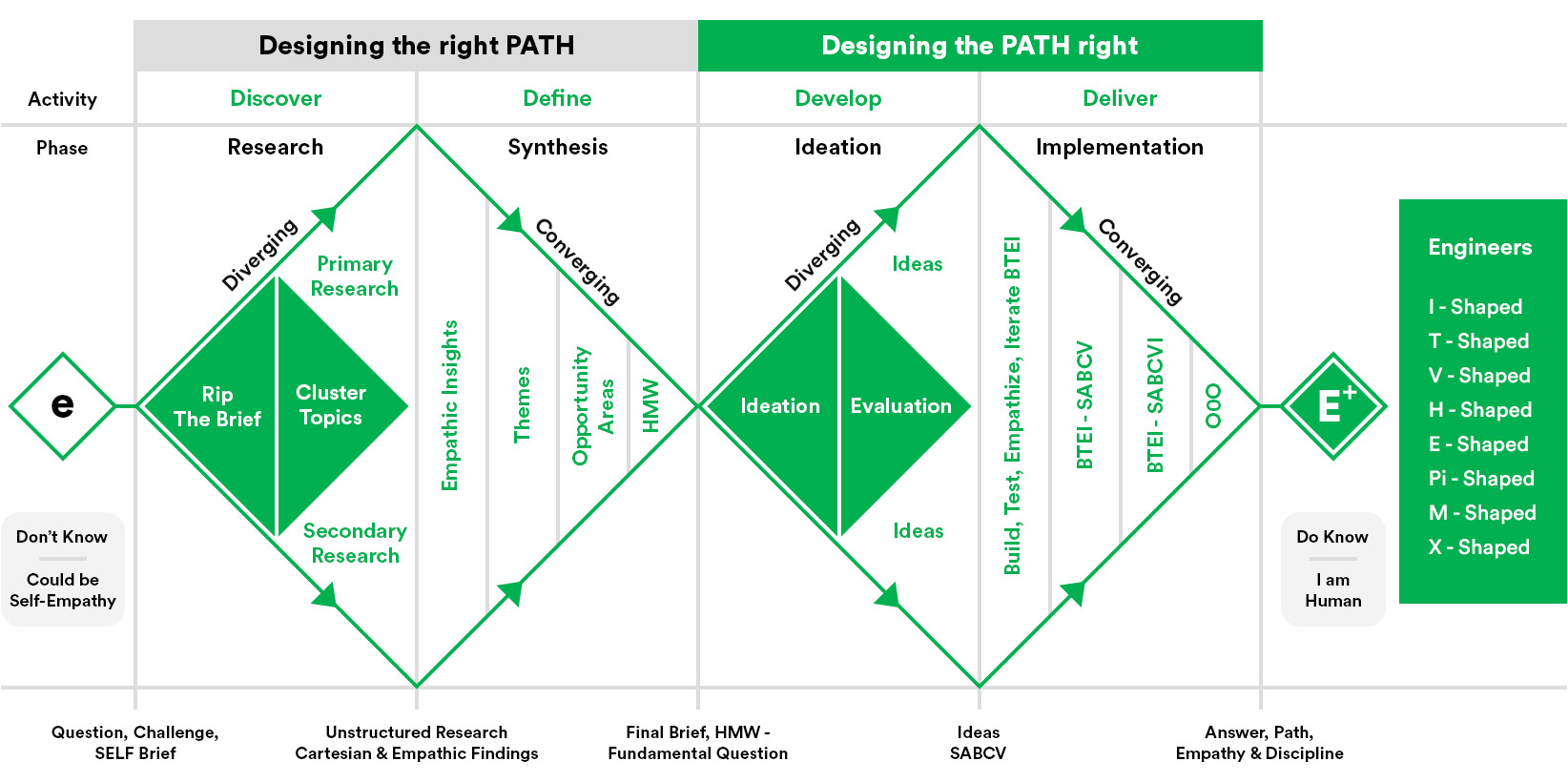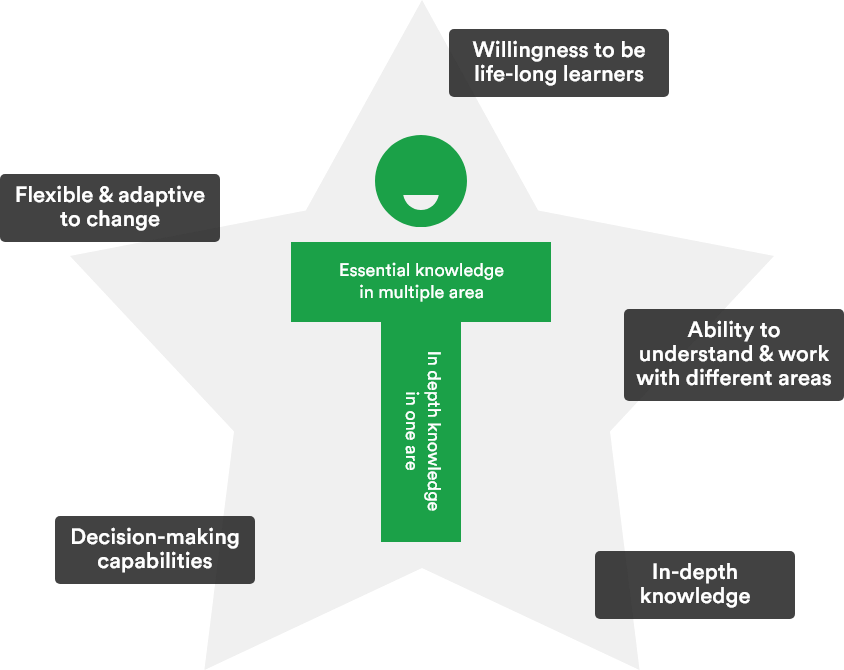Foundation Components
Home » Essentials
Enter the challenge decades of convergence of a VUCA world at the steady hand of technology. The opportunity is to harmonize the generalists and the specialists, to achieve focus despite the noise and communication outside the siloed expertise. So we all came to appreciate and promote the well-furnished cross-border and multidisciplinary T-shaped professional.
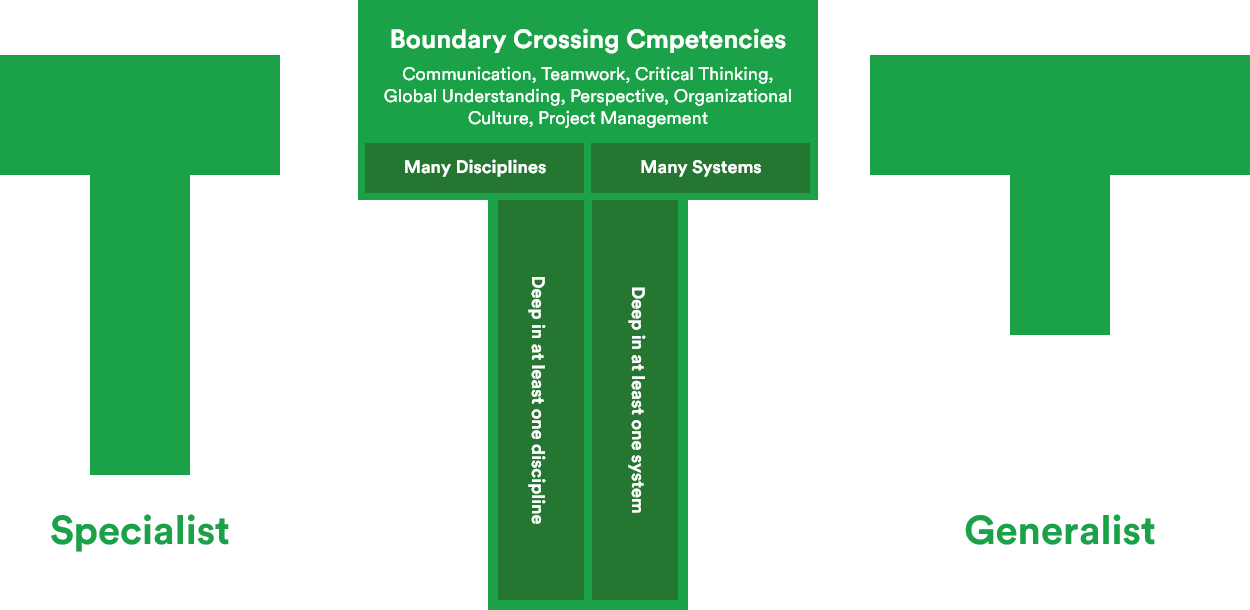
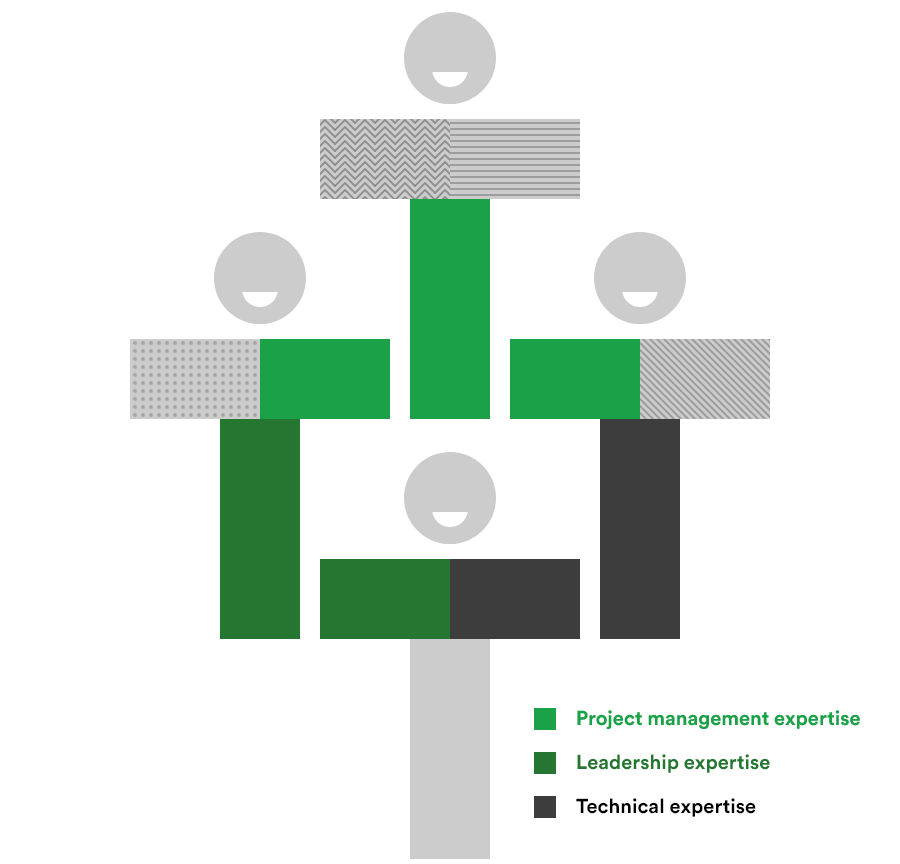
The wellsprings of knowledge, Dorothy Leonard-Barton (1995) describes the benefit of T-shaped skills from a business perspective. As employees, those who acquire T-shaped skills are extremely valuable in creating knowledge, enabling the full capacity of skills – both as individuals and in a team – by combining and integrating skills from multiple fields of expertise (Leonard-Barton 1995).
In an interview by Morthen T. Hansen (2010), Tim Brown described the T-shape in the following words: “T-shaped people have two kinds of characteristics, hence the use of the letter “T” to describe them. The vertical stroke of the “T” is a depth of skill that allows them to contribute to the creative process. That can be from any number of different fields: an industrial designer, an architect, a social scientist, a business specialist or a mechanical engineer. The horizontal stroke of the “T” is the disposition for collaboration across disciplines. It is composed of two things. First, empathy. It is important because it allows people to imagine the problem from another perspective- to stand in somebody else’s shoes. Second, they tend to get very enthusiastic about other people’s disciplines, to the point that they may start to practice them. T-shaped people have both depth and breadth in their skills.” (Hansen, 2010)
Extending this ‘T’ to ‘π’ means engineers are additionally able to work effectively with all business functions, in particular innovation, marketing and sales, services, finance and procurement.
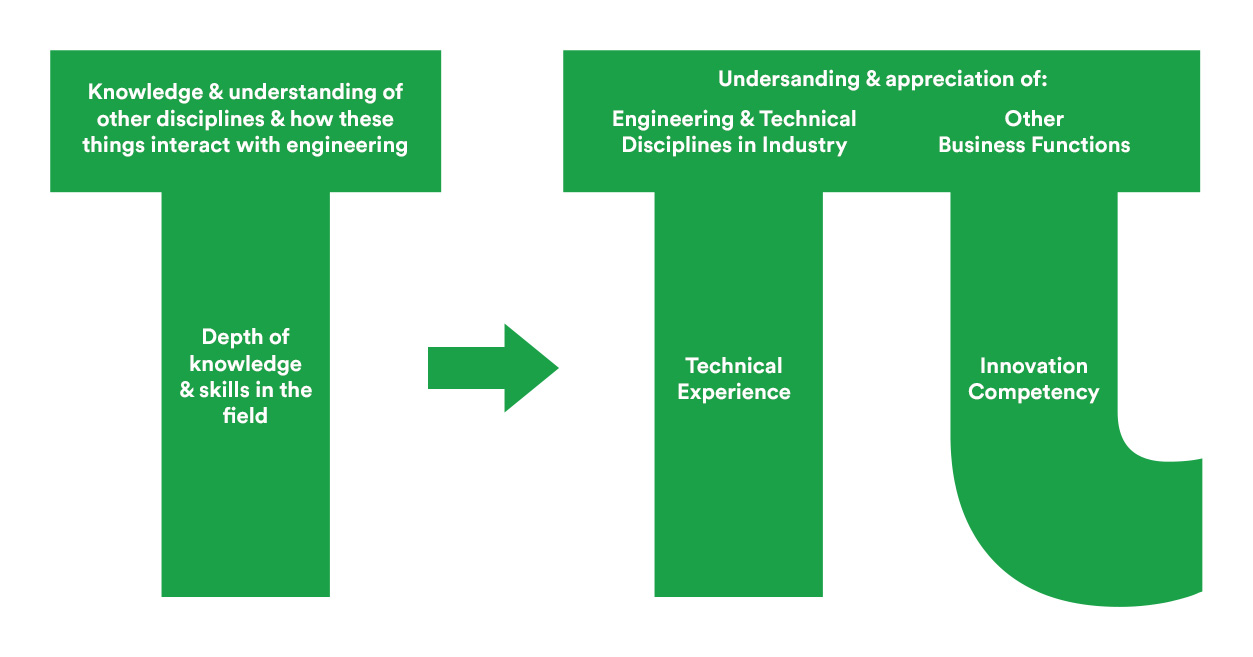
The earliest reference of the T-shaped I could find was introduced by journalist David Guest in the article, The hunt is on for the Renaissance Man of computing, published in The Independent (1991). David Guest presents a hybrid manager with T-shaped skills, who relates to the full image as well as having in-depth knowledge in the field of it and business.
But wait, if we want to truly look up multi-disciplinarity in engineering further, we find it in the Vitruvian Man itself and Leonardo da Vinci’s polymath’s work.


Empathy, Pivoting, Acceleration are all to familiar to the montagne-russe of the complex technology-first products today. Critical thinking, systems thinking and navigating the contradictitory priorities becomes the norm not the exception and one need a team at least, but better yet, we candrive forth with a team of teams.

In addition, to the T-shaped and the pi-shaped person there is the reverse T-shape (Baratta 2017,), the M-shape (Lazier & Wilshere 2016), the hashtag-shape (Kos 2015), the M-shape (Van Der Aalst 2016), the E-shape (Akay 2015), the comb-shape (Sharma 2018) and, all implying to result in better outcomes than the original.
Design thinking is an important part of this – the ability to work without a roadmap, to shift lens and to empathize with the end-user.
Growth hacking is a call for defining the essential in a business or better saind in an end-user group in odrer to focus for scalling.
Coming the composite architectured organisation (with packaged business capabilities, data fabric, private 5G and embedded AI), the growth is a deep tech problem requiring deep tech solutions. No longer a purelly managerial approch to growth is sufficient – research is key. Deep research.
